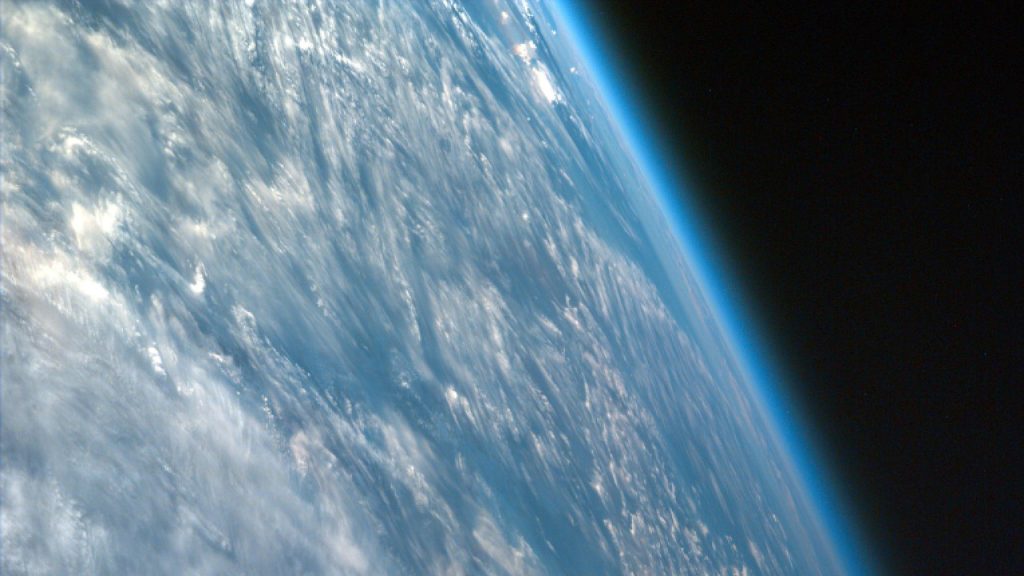
Scientists point to potential ozone layer depletion from small satellite emissions
Scientists are using a computer model to calculate the risks and potential impacts of iodine emissions from future satellite launches on the Earth’s protective ozone layer.
Small and light satellites, in near-Earth orbit, experience significant drag and require propulsion into orbit. Space agencies have been testing iodine propulsion systems for new small satellites, and could start to replace existing small satellites with the same technology.
Small satellites stay in orbit for 1 – 5 years and have a range of applications, from tracking space weather and measuring temperature of the Earth’s atmosphere, to testing technologies for larger satellites and supporting telecommunications.
Since the demand for small satellites could increase greatly in the future, it is important to understand the potential ozone layer depletion related to iodine emissions.
The ozone layer is found in a region of the Earth’s atmosphere known as the stratosphere, and acts as an important protection barrier against most of the sun’s harmful ultraviolet rays.
Using a chemistry-climate model of the atmosphere, a team of scientists have demonstrated in a paper published earlier this year that iodine-driven ozone layer depletion is likely to be very small – but the proliferation of small satellites and a switch to iodine propulsion could have unintended consequences.
Based on the currently expected number of small satellite launches, the amount of iodine likely to be injected into the air each time, and how long the small satellites will remain in orbit, the risk to the ozone layer is low.
With a modelled scenario of 1,000,000 satellites injecting an estimated 8 tonnes of iodine into the upper atmosphere every year, there would be minimal effects on the ozone layer.
Since space industries are one of the fastest growing sectors in the world, it is important to consider the likelihood of increased satellite launches above what is currently expected.
Scientists warn that if the number of satellite launches – and therefore mass of iodine emitted into near-Earth orbit – continues to grow then there will be significant ozone depletion each year.
In their study, the research team* scaled the scenario numbers up by a factor of 100. This resulted in 2-7% depletion of stratospheric ozone in the Antarctic region, each September to October when the hole in the ozone layer reaches its maximum.
Dr Wuhu Feng, a chemistry-climate modelling researcher involved in the iodine emissions study at the National Centre for Atmospheric Science and University of Leeds explains:
“Ozone in the upper layers of the atmosphere is important because it protects the earth from most of the harmful ultraviolet rays from the sun. Ozone depleting gases such as chlorofluorocarbons, better known as CFCs, have been phased out under the Montreal Protocol – an international treaty agreed to protect the ozone layer.
“Unlike CFCs, there is no regulation for emissions from satellite and rocket launches. So it’s vital that we begin to understand and track the impacts of satellite iodine propulsion systems on the ozone layer – and the wider environment.”
Dr Feng emphasises the importance of monitoring and regulating small satellite emissions on the ozone layer:
“The Montreal Protocol has been incredibly successful to date, and it is important to ensure that this continues in the future. Our analysis could help governments to ensure that the rapidly growing small satellites industry does not affect the ozone layer.”
There is a need for continued measurement and modelling efforts to understand how ozone will change in the future. Any new threats, like iodine emissions, which could threaten the recovery of stratospheric ozone must be rapidly evaluated and responded to.
Dr Wuhu Feng, researcher at the National Centre for Atmospheric Science and the University of Leeds.
*The research team involved experts from the National Centre for Atmospheric Science, University of Leeds, Institute of Physical Chemistry Rocasolano, and Laboratoire de Physique des Plasmas.
